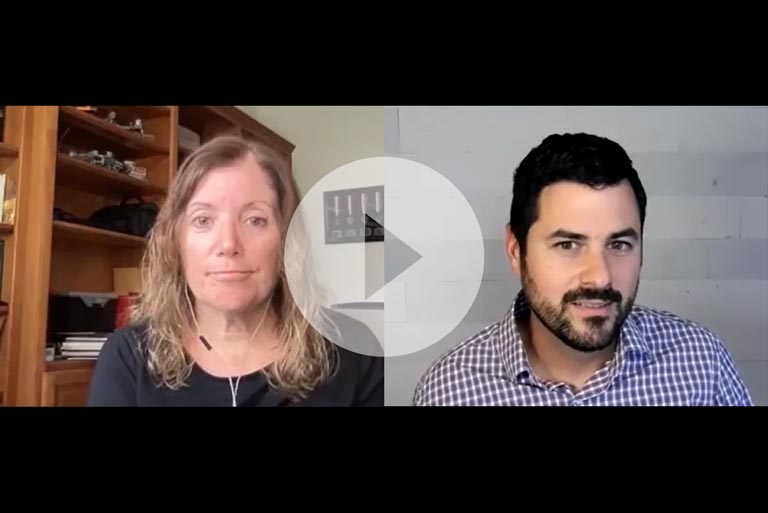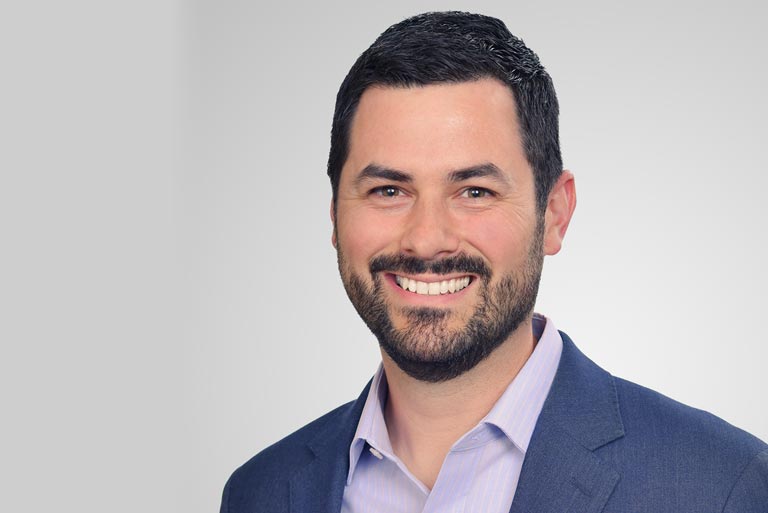Episode 52: Solution Spotlight with Joe Lalli –Transforming Business Processes with Digital-First Communications
In this second episode of our multi-part Solution Spotlight Series, Matt Swain is joined by Joe Lalli, Head of Solutions Analysis and Support within Broadridge Customer Communications, to discuss common themes behind the trajectory toward digital-first communications and how transitioning to digital can improve efficiencies, save costs and enhance the customer experience.
Matt: I'm Matt Swain. You're listening to the "Reimagining Communications Podcast." This is the second edition of a multi-part Spotlight series that will run through the end of 2021 where I will be speaking with key leaders within our Broadridge Customer Communications digital team. In this series, we'll be discussing the current market dynamics and how the modular approach of the Broadridge Communications Cloud is helping our clients modernize their communication's ecosystem and improve customer experiences. Today, I'm joined by Joe Lalli, Head of Solutions Analysis and Support within Broadridge Customer Communications. Joe, thanks for being here today.
Joe: Thank you for having me, Matt. I'm excited to have the opportunity to engage with you on today's topic.
Matt: Excellent. Well, Joe, you have a wealth of knowledge in the communications market. And in that context, I don't really know where to start beyond asking you to provide a brief overview of your background, your role and your responsibilities at Broadridge.
Joe: Sure. Where do I start? I've been with Customer Communications for about 21 years, spent about 16 years in senior leadership roles during that process. Currently, I have the responsibilities for the solutions analysis support team and print product management, which really includes shepherding opportunities through the sales process to solution for our omnichannel communications offering.
And it really is kind of, if you think about the RFX process, whether it's RFPs, RFIs, RFQs, clients want to learn more about our offering and how we can help them with their digital journey, which often includes just architecture as well as responses relative to how we might help them with their challenges, and consequently, it also includes financial proposals as part of that process as well. So, if you think about the customer lifecycle to engage in a new solution, we're that nucleus across that process.
Matt: And Joe, you mentioned the RFX process with the RFIs, Qs, Ps, to your point, they're for new prospects. You're also involved in renewal discussions, pricing and price modeling. I'd be really interested to hear what some of the common themes are that you're hearing from clients relative to their communications initiatives and what they're looking for from a communications partner.
Joe: Yeah, that's a good question, Matt. Coming across these RFPs, RFQs, RFIs, we try to catalogue the themes, right? And so, those themes are really improved customer engagement which involves improved communications experience and being able to deliver to all channels allowing the customer choice on what, when and how, right? This really is independent of devices and really requires content optimization.
The second thing I would say is probably enriched content and digital capabilities beyond standard email and presentment to enable that digital transformation. That starts with providing our clients with services and tools and strategies that can be easily deployed to allow a frictionless enrollment process, so that's really heavy as well in the RFPs, RFQs, RFIs that we respond to.
I would say probably at third, enhanced business tools to control the experience and allow self-service capabilities really to kind of mitigate and eliminate the dependency on IT. And as the market changes and clients change, our clients want to be able to rapidly deploy changes across that omni communication process. And then cost control, obviously, they want to have some assurances in being able to leverage technology and lower their spend across their communication channels. And then, probably last but not least, they want to be able to manage their business through data analytics and reporting to allow them to really track the important KPIs and be able to pivot when necessary.
Matt: So, Joe, what do you think the balance between tactical requests and more strategic requests are, because the first three are more strategic, it sounds like, and probably the fifth one as well, the analytics? Cost control, very tactical, right? Like how do you provide a similar service at a lower cost?
Joe: Right. And so, it's all about scale. Our technology in the Broadridge Customer Communications Cloud really provides that scale to allow us to deploy efficiently, rapidly the modules that our clients are requesting, whether it's, you know, through a phase process or all at once. So, the scale allows us to really hone in on what the important pieces are of their request and provide them a cost-effective solution through that process.
Matt: Excellent. So, in your discussion, you're talking about independent of channel, yet this digital transformation theme persists, right, like the client desire to increase engagement digitally. I wanted to tie back to one of the snippets from our webinar on modernizing communications ecosystem, just like I did in the first Spotlight series episode. And at one point, Katie Liebel of CustomStrat Advisory was talking about the banking customer's experience and the challenges around delivering a fully digital experience. Let's listen to that.
Katie: Customers increasingly want to have the full experience to be digital. And some of the places where banks get tripped up are, frankly, on some of the more valued customers. So, let's say I've got a more fluid customer who is trying to open an account. Well, by definition, I need to transfer in a larger sum of money, right, to get that account open. And then, you're going to hit, you know, various hurdles in terms of whether it be money laundering screens or other processes that are going to require you to come into a branch. Because you can't open an account if you don't know me and if I have, you know, funds or whatnot that are above the threshold. So, really thinking about that experience for all your targets, particularly, your most valuable segments, and how do you make that, you know, really seamless in a digital fashion?
Matt: So, Joe, how does Katie's view of what the end customer is asking for, tie back to your earlier comments, about what our clients and prospects are asking of us?
Joe: Matt, I think Katie's comments are right on point. You can hear some of the themes in what Katie said, most notably the frictionless experience and improved customer engagement which we talked about, and it really is prevalent across industries is that our clients are looking for a way to allow their customers to easily enroll and easily transact and to take the friction out. They always talk about starts and stops, people enrolling and then stopping because it becomes two, three, four, five clicks before they can even get to a point where they can enroll, and so that takes time. So, the instant gratification piece is important to enable that frictionless experience.
Matt: Again, given your unique insight and connection to the client contract side and the RFX side of it, I'd also be curious about your thoughts on whether or not companies are asking Broadridge the right questions based on what they're looking to do, but also, is there a disconnect between what the business wants of Broadridge or another strategic partner and what the customer needs are, and the customer's vision is for their future relationship?
Joe: Sure. That's a good question as well, Matt. I think, potentially, there is an opportunity for business and the procurement side to really come together much more in tune with what the business is looking for. I think sometimes the message gets lost through the process relative to just the way that RFX events have to proceed. It's always more productive when the business is really at the table and we are having a dialogue.
And more often than not, we like to offer workshops so that we really understand the challenges, could be business challenges, IT challenges, operational challenges, and try to unwind sort of those three areas and really hone in on where we can be effective in offering the solution that we have as well as the scale that we provide relative to cost efficiencies.
Matt: So, Joe, that brings up an interesting point. Is there something that the business owner or stakeholder can do more proactively to help not have content lost in translation from the business to procurement in their process?
Joe: Good question, Matt. Absolutely. I think having workshops in advance of RFX events would absolutely help in the process. You'll be able to get an understanding of the companies that you would be working with, understand their methodologies, their investments in technology, the scale that they provide, and just the people that you'd be working with in the partnership. I think, once you've been able to sort of distill those elements and then bring them forward into an RFX process, you'd be able to better hone in on the important aspects to meet your short and long-term goals.
Matt: So, Joe, let me shift gears a little bit with this next sound bite from the webinar, where Rob Krugman, our Chief Digital Officer, was talking about the challenge of getting too aggressive with shifting customers to a digital-only experience, a topic that we often run into with our clients and their desire to remove print from the process.
Rob: Several years ago, a Telco company made this wonderful decision that they were going to stop sending out paper because they had an email address for every single one of their mobile clients. So, they did it, right? And so, what happened is, they sent the email to tell people they weren't going to get physical statements anymore. This was like in November. And then they started to send again, cryptic emails that said, "Your statement is ready," or very, very little new pieces of information. And then, in January, they started to send people text messages because they hadn't paid their bills. And, of course, people were like, "You haven't sent me a bill in three months. What are you talking about?" "Oh, we auto changed you to electronic delivery." "Well, who told you to do that," right? So, context is so important here, right? What they ended up doing is, yes, they saved a lot of money on physical delivery, but I would bet the call center costs were three times, four times the actual cost of. These things all work together.
A better approach would have been, "Okay, let's simplify the printer communication. Instead of sending someone a 10-page document, let's send them a 2-page document. Maybe we include a QR code that integrates the digital experience. Maybe we back that up, we also send an email. Not one or the other, both. And the email actually tells them how much is due and makes it easy for them to pay with a frictionless experience where they just press a button." Show them off what's going to happen, and then, over time, suggest, "We're thinking about turning off the paper." Even if they chose not to do that, the cost savings that they would probably recognize would be 20%, 30%, 40%, and they wouldn't increase calls into the call center. I would actually argue, in addition to that, if they really focused on the experience. Just by fixing the experience, the number of calls in the call center would be dramatically decreased because people would understand what the data means and what it says.
Joe: I absolutely agree with Rob. The current communications approach coupled by various industry and regulatory oversights, when combined with some of the lagging technology can create communication clutter and drive call center volume up, and which can lead to brand dissatisfaction. So, we take a step back to understand the art of the possible while adhering to regulations to reimagine the client journey in a digital-only fashion, can help brands execute on many of the themes I mentioned earlier. So, we talk about cost control. We talked about frictionless experience, improved customer experience. All those would absolutely be part of that digital journey or that digital first process.
Matt: So, Joe, given how close you are to enterprises and their thinking around what they're looking for in a communications partner, how do you expect their communications needs are going to continue to evolve in the coming years?
Joe: Good question. The trajectory is definitely digital first. Preferences are changing and evolving, and those channels continue to basically propel the need for convenience. So, as brands continue to be able to solve for the client preferences and do so rapidly to keep their customers at contention, the access to the information and the frictionless navigation, if you will, and ability to transact independent of the communication channel will continue to evolve. And then, as we know on social media, personal devices, communication changes the way the population will consume that information and the way they transact.
Matt: Excellent. Well, Joe, I appreciate you joining me for this Spotlight series episode.
Joe: Thank you so much, Matt.
Matt: Certainly. I'm Matt Swain, and you've been listening to the "Reimagining Communications Podcast." If you liked this episode and think someone else would too, please share it, leave a review, and don't forget to subscribe. And if you're ready to reimagine your customer experiences, consider the Broadridge Communications Cloud, an end-to-end platform for creating, delivering and managing omnichannel communications and customer engagement. To learn more about Broadridge, our insights and our innovations, visit broadridge.com or find us on Twitter and LinkedIn.
Never miss an episode: Click the icon to subscribe to the Reimagining Communications podcast on the channel of your choice.












